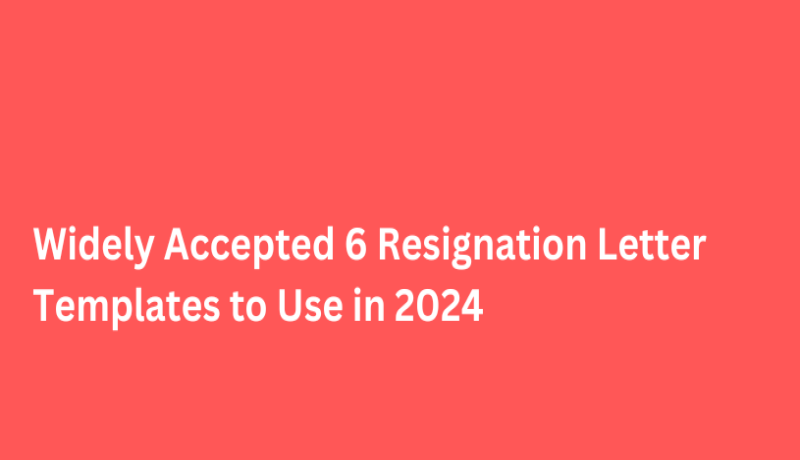How to Optimize Your LinkedIn Profile for Recruiters to Find You
Recruiters leverage LinkedIn extensively to identify potential candidates for job openings. With its vast professional network, recruiters can search for candidates based on specific skills, experience, and qualifications, allowing them to find individuals who align closely with the requirements of the position.
LinkedIn's advanced search filters enable recruiters to narrow down their search to locate candidates within desired industries, locations, and job roles.
Additionally, recruiters can review candidates' profiles, which often include detailed information about their work history, education, and professional accomplishments, aiding in the screening process.
LinkedIn serves as a valuable platform for recruiters to connect with qualified candidates efficiently and effectively.
Candidates should regularly update their LinkedIn profiles to ensure they remain visible and attractive to recruiters searching for talent.
By keeping their profiles up to date, candidates can showcase their latest skills, experiences, and achievements, providing recruiters with the most accurate and comprehensive representation of their qualifications.
This ensures that candidates remain relevant and competitive in the job market, increasing their chances of being discovered by recruiters seeking individuals with specific expertise or backgrounds.
Additionally, an updated LinkedIn profile signals to recruiters that the candidate is actively engaged in their professional development and career advancement, making them more appealing candidates for potential job opportunities.
Overall, maintaining an updated LinkedIn profile enhances a candidate's visibility and opportunities for career growth.
Optimizing your LinkedIn profile for recruiters involves making sure it's not only comprehensive but also tailored to catch their attention. LinkedIn tends to prioritize complete profiles in search results.
Here are some specific strategies:
Keywords: Use relevant keywords throughout your profile that recruiters might search for when looking for candidates with your skills and experience. This includes your headline, summary, job descriptions, skills section, and even in your activity.
Headline: Craft a compelling headline that not only states your current job title but also highlights your key skills or specialties. This helps recruiters quickly understand what you bring to the table.
Summary: Write a concise and engaging summary that showcases your unique value proposition, your career goals, and the specific areas where you excel. Highlight your achievements and key skills that are relevant to the roles you're targeting.
Experience: Detail your work experience thoroughly, including your accomplishments, responsibilities, and any metrics or results you can provide. Use action verbs and quantify your achievements whenever possible to demonstrate your impact.
Follow the Recruiter: Identify key recruiters in your sector or target companies. Connect with them and follow their updates. It would help your profile to be on their radar.
Skills: Make sure your skills section is comprehensive and accurately reflects your strengths. Add both hard and soft skills relevant to your industry and the roles you're interested in.
Recommendations: Request recommendations from colleagues, supervisors, or clients to add credibility to your profile. Positive testimonials from others can help reinforce your qualifications and make you more attractive to recruiters.
Certifications and Courses: If you have relevant certifications, licenses, or completed courses, be sure to include them on your profile. This demonstrates your commitment to professional development and can make you stand out to recruiters.
Customized URL: Customize your LinkedIn profile URL to include your name or relevant keywords. This makes it easier for recruiters to find you and increases your visibility in search results.
Open to Opportunities: Use LinkedIn's "Open to Work" feature to signal to recruiters that you're open to new opportunities. You can specify the types of roles you're interested in and set your preferences to be visible only to recruiters.
Engagement: Stay active on LinkedIn by sharing relevant content, engaging with others in your network, and participating in industry discussions. This not only increases your visibility but also keeps you on the radar of recruiters who may be scouting for talent.
Use a professional photo: Having a professional photo makes your profile more appealing and increases the likelihood of people clicking on it when they come across it in search results.
Engage with content: Like, comment, and share content from others in your network. This not only helps you stay visible to your connections but also increases the likelihood of your profile being discovered by others.
Publish content: Publishing articles, posts, or updates related to your industry or expertise can increase your visibility and attract followers who are interested in your content.
Join groups: Join LinkedIn groups relevant to your industry or interests and actively participate in discussions. This can help you connect with others in your field and increase your visibility to a broader audience.
Network strategically: Connect with people in your industry or related fields, including colleagues, alumni, and industry professionals. Personalize connection requests to increase the likelihood of them being accepted.
Use relevant keywords in your activity: When you like, comment, or share content, use relevant keywords in your interactions. This can increase the likelihood of your profile being discovered by others interested in those topics.
Stay active and update your profile: Regularly update your profile with new experiences, skills, achievements, and projects. Staying active on the platform increases your visibility and keeps your profile fresh in the minds of your connections and LinkedIn's search algorithm.
Optimize your activity settings: Adjust your activity settings to let others know when you've updated your profile, published a post, or made other changes. This can help keep you on the radar of your connections.
Career Advice
Why is It Important to be Visible in Your Organization?
Traits to Look for in a Professional Mentor
Why Should Senior Executives Use a Professional Resume Writing Service
17 Evidence-Based Strategies to Achieve Work-Life Balance
Things to Do When You Feel your Career is Stuck
How to Ask for a Promotion In 2024 and Actually Get It
Feeling Burned Out at Work? Here's How to Cope
How to Navigate Office Politics
How to Communicate Effectively with Senior Executives in Your Organization
How to Deal with a Bad Boss and Thrive
Navigating the Maze: Strategies for Thriving in a Toxic Work Environment
How to Maximize Time and Efficiency in a Business Conference
How to Write a LinkedIn InMail Seeking Job Opportunities: With Templates
How to Write a Great LinkedIn Summary in 2024
How Long Does It Take a Startup CEO to Build a Successful Business
What is Application Tracking System (ATS) in Recruitment and How to Create an ATS Friendly Resume
How to Write an Executive Resume
17 Key Points to Avoid in an Executive Resume
15 Executive Resume Mistakes You Should Fix Today
Inevitable Components of an Executive Resume
How to Address Job Gaps in Your Resume
How to Explain Layoff in Your Resume
How to Negotiate Salary When You are Offered a Job
Salary Negotiation for C-Suite Executives
7 reasons Why Recruiters Are Ignoring You Even After Interviews
How to Prepare for a Psychometric Assessment
20 Top Phone Interview Tips to Make a Good Impression
Why do Companies Fire and Hire at the Same Time?
What is Organizational Restructuring and How to Deal with an Organizational Restructuring
How to Deal with Job Insecurity
15 questions to Ask Yourself Before an Executive Panel Interview
Why does the Unemployed Find it Difficult to Land a Job








